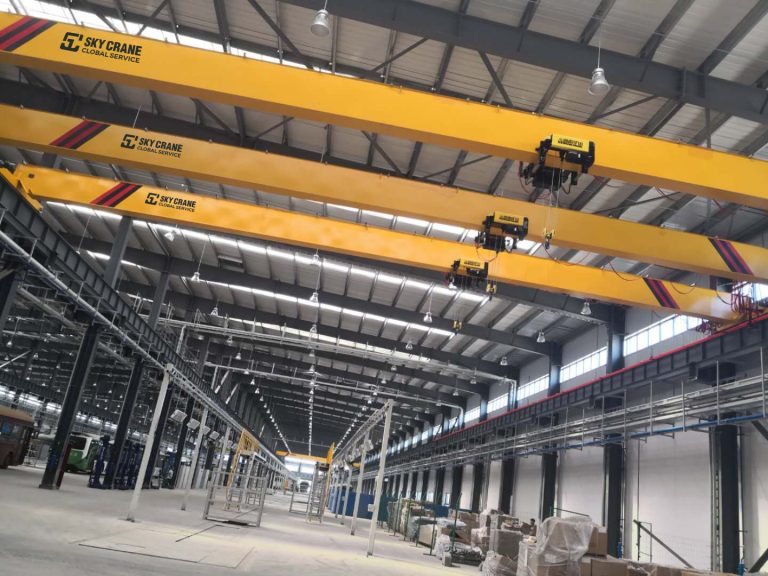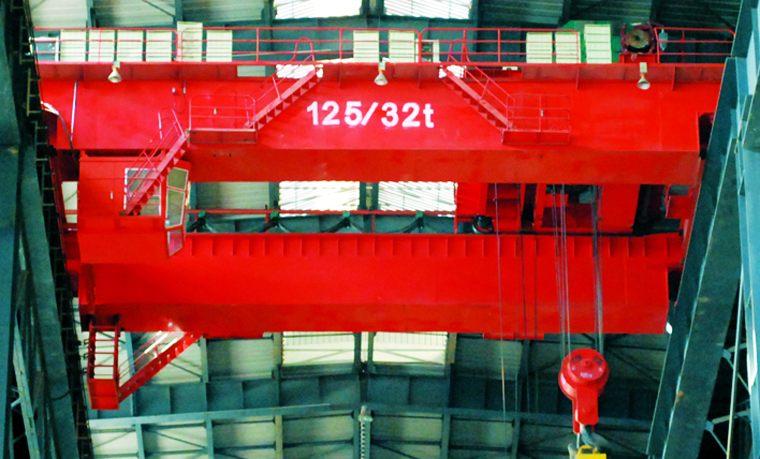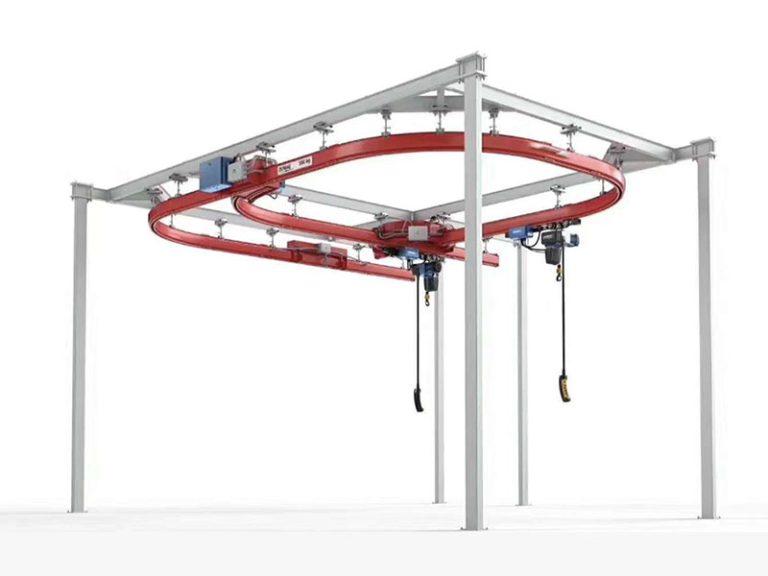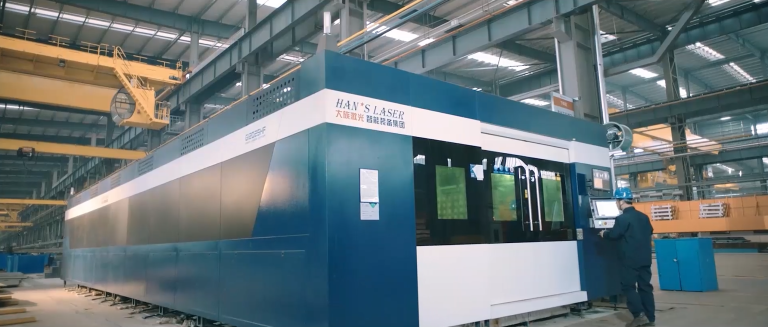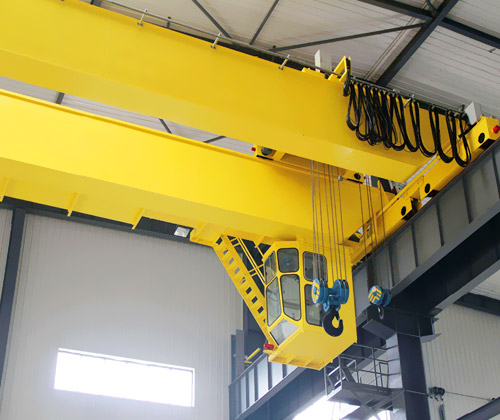Table of Contents
Benefits of Using Manual Single Beam Cranes in Custom Factories
Manual single beam cranes are an essential tool in custom factories, providing a cost-effective and efficient solution for lifting and moving heavy loads. These cranes are designed to be operated manually, making them ideal for smaller factories or workshops where space and budget constraints may limit the use of larger, more complex machinery. Despite their simplicity, manual single beam cranes offer a range of benefits that make them a valuable asset in any custom factory setting.
One of the key advantages of using manual single beam cranes is their versatility. These cranes can be easily customized to suit the specific needs of a factory, with options for different lifting capacities, beam lengths, and operating mechanisms. This flexibility allows factory owners to tailor their crane to the exact requirements of their operation, ensuring that they can efficiently handle a wide range of loads without the need for multiple pieces of equipment.
In addition to their versatility, manual single beam cranes are also highly durable and reliable. Made from high-quality materials such as steel or aluminum, these cranes are built to withstand the rigors of daily use in a factory environment. Their simple design and manual operation mean that they have fewer moving parts than other types of cranes, reducing the risk of mechanical failure and minimizing maintenance requirements. This reliability ensures that factory owners can depend on their crane to perform consistently and safely, even in demanding conditions.
Another benefit of using manual single beam cranes in custom factories is their cost-effectiveness. Compared to more complex crane systems, manual single beam cranes are relatively inexpensive to purchase and install. Their simple design and manual operation mean that they require minimal maintenance and upkeep, further reducing operating costs over time. Additionally, the versatility of these cranes means that they can be used for a wide range of lifting tasks, eliminating the need for multiple pieces of equipment and saving money on equipment purchases.

Manual single beam cranes are also easy to operate, making them ideal for factories with limited or unskilled labor. With basic training, factory workers can quickly learn how to safely and efficiently operate a manual single beam crane, reducing the risk of accidents and injuries on the factory floor. This ease of operation also means that factory owners can quickly adapt their crane to changing production needs, maximizing efficiency and productivity in the factory.
Overall, manual single beam cranes offer a range of benefits that make them an excellent choice for custom factories. Their versatility, durability, cost-effectiveness, and ease of operation make them a valuable asset in any factory setting, providing a reliable and efficient solution for lifting and moving heavy loads. By investing in a manual single beam crane, factory owners can improve their operations, increase productivity, and ensure the safety of their workers.
How to Choose the Right Manual Single Beam Crane for Your Custom Factory
When it comes to choosing the right manual single beam crane for your custom factory, there are several factors to consider. Manual single beam cranes are a popular choice for factories that require lifting and moving heavy loads in a controlled manner. These cranes are versatile, cost-effective, and easy to operate, making them an ideal solution for many industrial applications.
One of the first things to consider when choosing a manual single beam crane for your custom factory is the weight capacity. It is important to select a crane that can safely lift and move the heaviest loads that you will be working with. The weight capacity of a crane is typically determined by the size and strength of the beam, as well as the type of hoist that is used. Be sure to carefully assess your lifting requirements before making a decision.
Another important factor to consider is the span of the crane. The span is the distance between the two supporting columns of the crane, and it determines the maximum width of the area that the crane can cover. It is essential to choose a crane with a span that is suitable for the layout of your factory and the size of the loads that you will be handling. A crane with a longer span may be necessary for larger factories or for handling oversized loads.
In addition to weight capacity and span, it is also important to consider the height of lift that is required for your custom factory. The height of lift is the maximum distance that the crane can raise a load off the ground. It is important to choose a crane with a sufficient height of lift to accommodate the vertical space available in your factory. Be sure to take into account any obstacles or obstructions that may limit the height of lift that is possible.
When selecting a manual single beam crane for your custom factory, it is also important to consider the type of hoist that is best suited for your needs. There are several types of hoists available, including chain hoists, wire rope hoists, and electric hoists. Each type of hoist has its own advantages and disadvantages, so it is important to choose the one that is most appropriate for your specific application.
Once you have determined the weight capacity, span, height of lift, and type of hoist that you require, it is time to consider any additional features or options that may be beneficial for your custom factory. Some manual single beam cranes come with adjustable speed controls, overload protection systems, and remote control capabilities. These features can enhance the safety, efficiency, and convenience of your crane operation.
In conclusion, choosing the right manual single beam crane for your custom factory requires careful consideration of several key factors. By assessing your lifting requirements, selecting a crane with the appropriate weight capacity, span, height of lift, and hoist type, and considering any additional features or options that may be beneficial, you can ensure that you select a crane that meets your specific needs and enhances the productivity of your factory.
Maintenance Tips for Manual Single Beam Cranes in Custom Factories
Manual single beam cranes are essential equipment in custom factories, used for lifting and moving heavy loads with precision and efficiency. To ensure the smooth operation of these cranes and prevent breakdowns, regular maintenance is crucial. In this article, we will discuss some maintenance tips for manual single beam cranes in custom factories.
First and foremost, it is important to inspect the crane regularly for any signs of wear and tear. Check for loose bolts, damaged wires, and any other visible damage that may affect the crane’s performance. It is also important to inspect the crane’s structure for any signs of corrosion or rust, as these can weaken the crane and pose a safety hazard.
In addition to visual inspections, it is important to perform regular maintenance tasks such as lubricating moving parts and checking the crane’s alignment. Proper lubrication of the crane’s moving parts will help reduce friction and wear, extending the crane’s lifespan. Checking the crane’s alignment ensures that it operates smoothly and efficiently, without any jerky movements or vibrations.
Another important maintenance task is to check the crane’s electrical components, such as the control panel and wiring. Make sure that all electrical connections are secure and that there are no exposed wires or damaged insulation. It is also important to test the crane’s emergency stop button to ensure that it functions properly in case of an emergency.
Regularly inspecting the crane’s hoist and hook is also crucial for ensuring safe operation. Check for any signs of wear on the hoist cable and make sure that the hook is securely attached to the hoist. It is also important to check the crane’s load capacity and make sure that it is not being overloaded, as this can cause damage to the crane and pose a safety risk.
| Number | Name |
| 1 | QD OVERHEAD CRANE WITH HOOK CAP.5-800/150T |
| 2 | Rail – mounted Gantry Crane |
| 3 | European-style crane |
| 4 | Harbour crane |
In addition to regular maintenance tasks, it is important to train crane operators on proper operating procedures and safety protocols. Make sure that operators are familiar with the crane’s controls and know how to safely lift and move loads. It is also important to provide operators with proper safety gear, such as hard hats and gloves, to protect them from injury.
In conclusion, regular maintenance is essential for ensuring the safe and efficient operation of manual single beam cranes in custom factories. By following these maintenance tips and conducting regular inspections, you can prevent breakdowns and ensure that your crane operates smoothly for years to come. Remember, safety should always be the top priority when operating a crane, so make sure to follow all safety protocols and provide proper training to crane operators. By taking care of your crane and following these maintenance tips, you can ensure that it continues to serve your factory’s needs for years to come.

